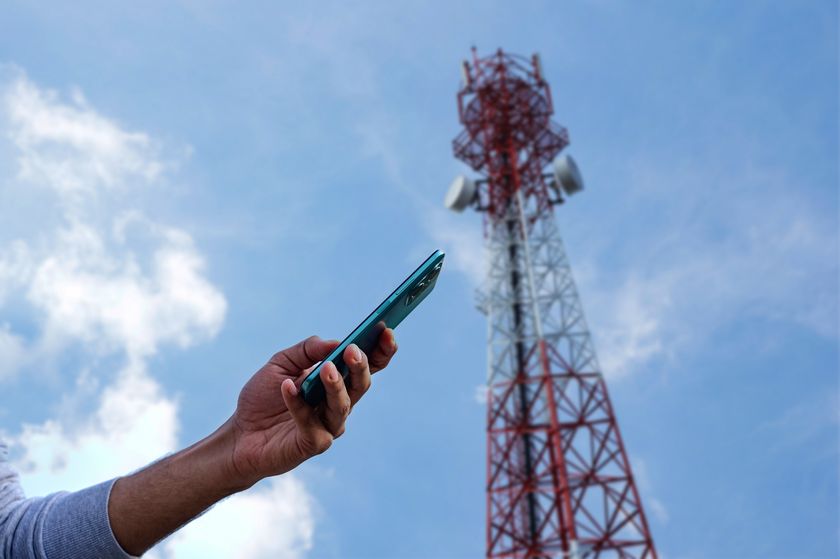Inside BT's Labs: The future of broadband
BT says it’s going to have “ultrafast” broadband in 12 million homes by 2020 — is that a pipe dream?
100 Gbits/sec 'hyperfast' broadband
Having originally said it was going to deliver a pure fibre connection to a quarter of homes and businesses, BT has fallen some considerable distance short of that long-abandoned target. And with G.fast squeezing even more speed out of the copper network, it seems unlikely BT's going to make the case for a full fibre network in the foreseeable future.
It has, however, pledged to deliver end-to-end fibre to two million premises by 2020, And if you're one of those lucky souls, you could be set for a monumental speed increase in the not-too-distant future.
Openreach has been working with Huawei on a new piece of telephone exchange equipment that could increase the speed of today's fibre-to-the-premises (FTTP) lines by a factor of 40, delivering an almost incomprehensible top speed of 100Gbits/sec. To put that into context, if you're a business performing an online backup of a 10TB database, that kind of connection speed will see the job completed in around 13 minutes.
As it's a pure fibre connection, those speeds can be maintained over long distances. "It uses four colours of light, and each one of those colours of light runs at 25 gig," explained Mark Lam, chief information officer for Openreach. "It goes down a single fibre, here we've got 10km, going to a passive optical splitter that sits out in the field [it] takes no electricity, [it's] very reliable."
The splitter allows the line to be run into different premises. A residential customer may take one colour and have a 25Gbits/sec connection; a business with heavy data demands may take three colours and have a 75Gbits/sec connection. The colours can also be split, so that five customers share a single colour and each have a 5Gbits/sec connection.
Before you call BT and place an order for a red, white and blue, this equipment isn't ready for primetime. On the day we visited BT Labs in early June, the Huawei equipment had only been at Adastral Park for a week and the engineers were still tinkering with it. Lam wouldn't speculate when it might be used in a commercial deployment, but it seems unlikely to be ready much before the end of the decade.
Millimetre Wave 5G (mmWave)
BT and various other operators are starting to put some meat on the bones of the phrase 5G, a rather meaningless moniker for next-generation wireless data until they start drilling down into specifics. Well, 5G is definitely getting specific -- with wavelengths ranging from 10mm down to a single millimetre. Hence the name.
Get the ITPro. daily newsletter
Sign up today and you will receive a free copy of our Focus Report 2025 - the leading guidance on AI, cybersecurity and other IT challenges as per 700+ senior executives
mmWave moves out of the congested sub-6GHz zone where today's 3G and 4G networks reside. Indeed, Ofcom has set aside the 26GHz band for 5G testing, whereas 4G operates at 800MHz, 1,800MHz and 2,600MHz (or 2.6GHz).
That shift in spectrum allows 5G to potentially hits speeds that are well beyond 4G. However, there are some serious downsides too, as Ian Mings, BT's head of wireless research, explained. He said pilot tests at Adastral Park had shown that mmWave was capable of reaching speeds "getting towards 1Gbit/sec, but even light foliage reduced the throughput by about a half, and this was winter foliage not summer foliage."
Buildings are another insurmountable obstacle. "Normal windows would reduce the throughput by up to 90%," said Mings. "Metalised windows, which are becoming prevalent in UK buildings, reduced throughput by about 95%." BT is working on different techniques to improve the throughput, but you're almost certainly going to need external antenna to get decent 5G reception within homes and offices.
There's little hope of bending the signal around buildings, either. "Sub-6GHz will defract around buildings," he explained. "mmWave just goes in a straight line: it either reflects or it doesn't do anything. You don't get coverage very well behind buildings."
However, that doesn't mean it's unsuited to life in big, built-up cities. "Millimetre wave will do really well down canyons [such as streets] because it reflects off all the buildings down the street." In massive venues such as Wembley or the O2, it could provide an enormous speed boost, instead of everyone trying to latch onto a 4G signal.
And companies are already working on solutions to get around mmWave's poor penetration. "To overcome high diffraction and penetration losses and blockages at mmWave frequencies, a cluster network concept is envisioned where a set of coordinated APs [access points] work together to provide ubiquitous coverage through AP diversity," reads a Nokia white paper on mmWave.
"In the event of blockage due to shadowing, one AP will rapidly hand off the user device (UD) to another AP in the cluster. These handoffs may be quite frequent as the UD moves through the network. Moving obstacles, hand motion and changes in orientation may all contribute to multiple, successive handoffs."
In fact, mmWave 5G is shaping up to be an almost complementary, fixed-point companion to 4G, rather than an outright replacement. Devices will seamlessly hand off to the 4G network when they can't latch onto a 5G signal. It will deliver high-bandwidth bursts in selected locations, but it doesn't seem likely that you're going to be picking up a 5G signal on the train to work, or in rural areas (those pesky trees) or even in your own home.
This article originally appeared in PC Pro. Main image credit: PC Pro
Barry Collins is an experienced IT journalist who specialises in Windows, Mac, broadband and more. He's a former editor of PC Pro magazine, and has contributed to many national newspapers, magazines and websites in a career that has spanned over 20 years. You may have seen Barry as a tech pundit on television and radio, including BBC Newsnight, the Chris Evans Show and ITN News at Ten.
















